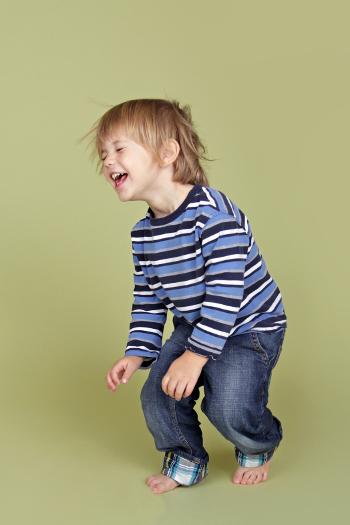Are you a kangaroo?
Duration/age

Jump like a kangaroo, hop like a frog
Next time your child is up and moving around, challenge them to a game of imagination.
Can you jump like a kangaroo? How does a frog jump?
How many different animals can you and your child pretend to be?
Try and think of ones that move in different ways. Some are really tall. Some move on two legs and some on four. Some move slowly and some are fast. Some are big and some are small. How will your child need to move their arms and legs to be a tall creature? What about a scary one?
Let’s move like monkeys high up in the trees.
Can you make yourself as tall as a giraffe?
Talk with your child about how it feels to be all the different animals.
How does it feel to be a fast and tiny mouse?
Does it feel the same when you are a big, slow elephant?
Take turns to act like an animal and see if other people can guess what you are.
Materials you will need
- Your body
Your imagination
Skills this activity improves
Why does this matter?
When your child is pretending to be all the different animals, they will be building their motor skills and coordination. They will be learning to control their body as they move fast and then slow, or make themselves tall and then small. They will be visualising or forming mental pictures of what each animal looks like.
When you are giving them instructions like ‘can you jump like a frog?’ your child will be thinking about what they know about frogs and turning that into action. This helps their visualisation skills. When you use words with your child, like a bouncy, happy dog or a sleepy, purring cat, you are helping them to build a wide vocabulary.
What does this lead to?
Motor skills, coordination and body control are important for children to develop as it helps them to write and to move safely in their environment.
Visualising helps children when they are reading. When they can form a mental picture of what they are reading children will be more involved with the book or story. Visualising will also help your child to they solve problems because they can image possibilities - and decide if they work or not.
A wide vocabulary also helps children as readers and communicators.
Language to use
- Jump, hop, run, roll, flap, fly, waddle, slither, slide
- Dog, cat, tiger, lion, hippo, sheep, pig
- Kangaroo, kookaburra, wombat, emu
- Rabbit, mouse, sparrow
- Small, tiny, weak
- Large, strong, tall
- Animal, creature, bird, reptile
Questions to use
- How high can you stretch up?
- How does a puppy move? What about an old dog?
- Can you think of an animal that moves quickly?
Useful tips
- Find some books at the library about animals and read them with your child.
- You might also like to take a look at the activities Night-time creatures and On your mark, get set, go.
- Remember to talk to your child in your home language.
More ideas
Play a similar game with animal sounds. Can you moo like a cow? Which animal goes woof?
Variation by age
Birth to two year olds
- Sing some songs about animals with your little one.
Three to five year olds
- Play a guessing game using clues. Start by asking your child to guess what animal you are. “I have big ears and a furry tail. I hop." Then ask them to have a turn and give you clues.
Questions to ask
- Can you guess?
- Are you a dog?
Language to use
- Ears, tail
- Fur, feathers


